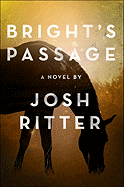
| Publisher: | Dial Press | |
| Genre: | General, Fiction, Literary | |
| ISBN: | 9781400069507 | |
| Pub Date: | June 2011 | |
| Price: | $22 |
| Fiction |
by Josh Ritter
Forget Josh Ritter as singer-songwriter for a minute, and forget recent books by other singer-songwriters (Bob Dylan, Patti Smith, Steve Earle et al.)--Ritter's first novel is a standalone work in a style all his own. Bright's Passage is a fable of sorts, with echoes of the Old Testament, All Quiet on the Western Front, Shakespeare and even dashes of Flannery O'Connor, A Passage to India and Cold Mountain thrown in.
Henry Bright is a West Virginia coal miner's son who brings his horrific memories of World War I home to a young wife who dies in childbirth, leaving him with nothing but his uniform, an infant son, a goat and a horse. At the insistence of the mysterious voice of an angel, he buries his bride, burns down his house and takes off, pursued by her father. That self-declared "Colonel" (a veteran of the Philippines) and his two cruel sons are driven by an old family grudge to kill Henry and take his child. Oh, and Henry's house burning accidently sets off a forest fire that chases all of the characters through their passage toward redemption and retribution.
Somehow Ritter holds all this together with a seamless lyricism that blends alternating scenes of the war trenches of France with the wooded ridges of West Virginia, all rendered with surprising verisimilitude and telling metaphor. "The War, the fire, the Colonel, and the angel: It felt as if some gigantic stone had somehow dislodged itself and begun rolling toward him down the long, slow curve of the world." You can't put all that in a five-minute song with a guitar hook. --Bruce Jacobs, founding partner, Watermark Books & Cafe, Wichita, Kans.
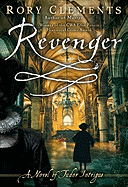
| Publisher: | Bantam Books | |
| Genre: | General, Fiction, Mystery & Detective, Thrillers, Historical | |
| ISBN: | 9780385342841 | |
| Pub Date: | June 2011 | |
| Price: | $25 |
| Mystery & Thriller |
by Rory Clements
John Shakespeare, brother of Will, former Intelligencer for Walsingham, finds himself drafted back into the spy business in this sequel to Martyr. Approached first by the malevolent McGunn, agent of Lord Essex, John is determined to refuse until contacted by Secretary Robert Cecil, who asks him to take Essex's commission and become a double agent. Reluctantly, John agrees, his skills creaky after five years' absence from the spy game.
There are many plotlines in this novel, each essential and intriguing and connected in some way, and Clements has succeeded in resolving them with style and a sure touch. There's the Catholic arc, as important politically as personally since John's wife, Catherine, adheres to the old religion, the danger of which drives a wedge between them; there's the Lost Colony of Roanoke; there's the question of Essex poisoning his wife to marry Arabella Stuart, the lady next in line of succession; there's the hold that McGunn has over Essex.
Clements gives his readers ground-level experience of Elizabethan England--detailed, fascinating and often appalling--as these various storylines arc towards their conclusions. In the process, the reader meets some extraordinary characters: loyal and resourceful Boltfoot Cooper, John's man; priest-hunter Richard Topcliffe, who'd dance a jig at the idea of feeding the whole Shakespeare clan to dogs--if he weren't such a Puritan; Joshua Peace, Searcher of the Dead (think Tudor M.E.), calm among his bodies. This work is the second in the John Shakespeare, Intelligencer series, and is reminiscent of C.J. Sansom's Matthew Shardlake series--not quite as grim, but just as superbly entertaining. --Judith Hawkins-Tillirson, proprietress, Wyrdhoard books, and blogger at Still Working for Books
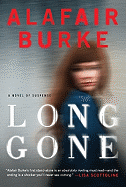
| Publisher: | Harper | |
| Genre: | General, Suspense, Fiction, Mystery & Detective | |
| ISBN: | 9780061999185 | |
| Pub Date: | June 2011 | |
| Price: | $24.99 |
| Starred | Mystery & Thriller |
by Alafair Burke
In her first standalone novel, Alafair Burke (author of 212 and Angel's Tip), moves out of the law enforcement realm and into the experiences of a privileged young woman trying to make a name for herself without her family's money or influence. When Alice Humphrey lands the job of her dreams, she quickly and painfully learns that appearances can be deceiving... and deadly.
Burke took a huge risk leaving the safety of an institution she knows intimately and a subgenre she's well versed in for a psychological thriller in the world of the arts. But her risk has paid off in spades. Burke has expanded her skills with each novel, and Long Gone is an exceptional exhibit of her writing prowess.
Long Gone deftly navigates between alternating points of view: male/female, teen/adult, detective/civilian, privileged/middle class. Every character has a dimension and richness befitting his/her role. The novel also shows off one of Burke's strengths--regardless of what book she's writing, she brings New York City to life on the page.
Plot plays a vital role in the thriller genre, of course; Burke doesn't neglect action. She creates a series of events containing social issues wrapped in well-timed plot twists that keeps readers on their toes and quickly turning pages to get to the resolution.
Combine crisp dialogue, Burke's signature wit, lean prose infused with pop culture references and a pace that could earn Burke a citation for excessive speed and the result is Long Gone. Whether you've experienced Burke's work before, Long Gone is a book you won't want to miss. --Jen Forbus, blogger at Jen's Book Thoughts

| Publisher: | Simon & Schuster | |
| Genre: | Humorous, Fiction, Legal | |
| ISBN: | 9781416569770 | |
| Pub Date: | June 2011 | |
| Price: | $25 |
| Mystery & Thriller |
by Ron Liebman
Accomplished D.C. lawyer Ron Liebman evokes a sharply realistic and very funny New Jersey underworld in his second novel, Jersey Law (following Death to Rodrigo). Fans of Michael Connelly's The Lincoln Lawyer will enjoy the well-meaning but mildly rule-bending team of Mickie and Junne, criminal defense attorneys for inner-city Camden's drug dealers and lowlifes. They defend drug kingpin Slippery Williams; they spar with the DA; and they carefully balance the letter of the law with watching their backs. Junne (short for Junior), our narrator, places us firmly in the Camden streets with his conversational style, what he would call "street jive." Don't mind the sentence fragments; they make the book breathe in Junne's terse Jersey voice.
Mickie and Junne have been friends since middle school, and have their practice down to a fine art. When one of their clients decides to testify against another, however, their loyalties are tested. If they warn the client, who is an old friend, men will certainly die, and they will have broken client confidentiality; if they don't, it may mean their own demise. And then there's their new secretary to worry about: Tamara is working hard to keep her nephew off the streets and out of the gang life. Tamara is an excellent example of one of Liebman's strengths as a novelist: he creates funny, sympathetic characters we care about in spite of their flaws.
Junne's large Italian family, Mickie's womanizing and their shady lawyer-landlord fit perfectly in with the scenery. By turns poignant and suspenseful, Jersey Law is consistently funny, ending on just the right note for a sequel. --Julia Jenkins, librarian and blogger at pagesofjulia
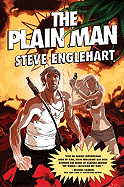
| Publisher: | Tor | |
| Genre: | General, Fiction, Fantasy | |
| ISBN: | 9780765324993 | |
| Pub Date: | June 2011 | |
| Price: | $25.99 |
| Science Fiction & Fantasy |
by Steve Englehart
Steve Englehart was one of the most widely recognized comic book writers of the 1970s, with memorable runs on books ranging from Batman to The Avengers. In 1981, he published his first novel: The Point Man was the story of Max August, a Vietnam veteran turned rock 'n' roll DJ who unwittingly stumbled into a Cold War occult conspiracy and was recruited to fight for the good guys--after which the character disappeared for nearly three decades. When Englehart finally returned to the series with The Long Man (2010), he fixed things so that Max had acquired so much magical knowledge that he'd become functionally immortal back in 1985--a man in his late 50s with the body of a 35-year-old.
The Plain Man picks up the story of Max's battle against a right-wing cabal called the FRC in the summer of 2009. He's tracked two of its leaders, who are conducting an illicit romance, to a Burning Man-like festival in the Nevada desert, and is determined to turn at least one of them into a double agent. A conspiracy with nine co-directors, however, is bound to have competing agendas, and the novel's perspective constantly shifts, following up on hints dropped in The Long Man and adding a few more narrative threads for good measure.
The basic setup is easy enough to keep track of, and Englehart never takes his hand off the throttle, essentially turning Max's war with the FRC into the mystical equivalent of James Bond vs. SMERSH, complete with a plot to set off a nuclear bomb in the Yucca Mountains. --Ron Hogan, founder of Beatrice.com
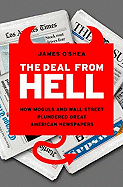
| Publisher: | PublicAffairs | |
| Genre: | General, Language Arts & Disciplines, Business & Economics, Journalism | |
| ISBN: | 9781586487911 | |
| Pub Date: | June 2011 | |
| Price: | $28.99 |
| Current Events & Issues |
by James O'Shea
If there's one book I'd have to select as "least likely to get widespread, major newspaper coverage," I would go with James O'Shea's The Deal from Hell. He recounts a story about 23-year-old Charles Kuralt just getting started with CBS News. A call comes in, middle of the night--a plane had jumped the runway at LaGuardia and was sinking in the river. Kuralt gets the nod and runs to flag a cab, only to be stymied by traffic. He waves down a motorcycle, explains the situation, and the driver ("Get on!") weaves and swerves dangerously between cars and trucks to get Kuralt to the scene, to the scoop, vaulting him into the role of youngest correspondent ever. If it seems apocryphal, it's because it's a story from a lost era when the most important thing was nailing the story to the wall.
O'Shea came of age when newspaper management wasn't consolidated, when papers weren't owned by corporations disinterested in quality reportage or maintaining the role of newspaper as watchdog. O'Shea charts that change, when he left the Los Angeles Times after management had fallen victim to consolidation. Sent to Los Angeles by the Chicago Tribune to quell discord over corporate mandates, he began to unravel a tangle of deception, immorally motivated management and a shifting journalism culture. The facts detailed here, combined with a fast-paced narrative, present a damning look at the machinations of newspaper management, but O'Shea shows that there are still journalists eager to climb aboard that weaving motorcycle. --Matthew Tiffany, writer for Condalmo
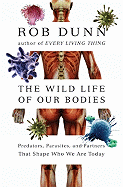
| Publisher: | Harper | |
| Genre: | General, Medical, Physiology, Science | |
| ISBN: | 9780061806483 | |
| Pub Date: | June 2011 | |
| Price: | $26.99 |
| Science |
by Rob R. Dunn
Biologist Dunn has produced a fascinating, wide-ranging, frightening and ultimately hopeful book about our human species. Dunn has drawn precise connections between the world 4.4 million years ago, the many similarities we share with other species evolving along with us and the overwhelming onslaught of contemporary diseases of the body and mind.
Agriculture, he suggests, was "a desperate act of post-apocalyptic sustainment" and not the continual improvement as we usually view it. The move from individual hunting/gathering to intensive dedicated farming, over time reduced our variety of foodstuffs to the current alarming 75% deriving from just six plants and one animal. Potato famine, anyone?
More puzzle pieces: as humans have "improved" health, we have opened the door to an array of devastating illnesses. Indoor plumbing removes our intestinal worms, and the ancient balance between whipworm and gut immune response flounders, producing Crohn's (first diagnosed in the 1930s). Leaf-cutter ants, diabetes, sickle-cell anemia, snakes, predators, hairlessness, xenophobia--all these and more are pieces of Dunn's argument.
Dickson Despommier's graduate students, spurred to action by the thought of a hungry, hot, arid, treeless Earth of 2050, began intense research into the requirements of urban farming and proposed dedicated 30-story buildings integrating organic agriculture and wildlife into city life. They found that just 150 such "farms" could sustain New York City, saving many millions of dollars in energy costs as well. If humanity is to have a future that is living and not just surviving, surely it is to be found in the rewilding of our cities, our lives and, yes, our guts. An excellent book and unexpectedly wry! --Judith Hawkins-Tillirson, proprietress, Wyrdhoard Books, and blogger at Still Working for Books
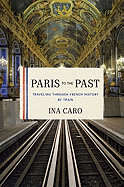
| Publisher: | W.W. Norton & Company | |
| Genre: | Travel, France, History, Europe | |
| ISBN: | 9780393078947 | |
| Pub Date: | June 2011 | |
| Price: | $27.95 |
| Travel Literature |
by Ina Caro
Ina Caro and her husband, biographer Robert Caro, have lived and traveled in France several months each year for the past 20 years. Caro's moment of inspiration for this book is twofold: first, she decides to visit monuments chronologically, rather than geographically, and she decides to write only about places that can be day trips from Paris by train. By visiting sites chronologically, she is able to observe the historical development of architectural style. By limiting herself to day trips, she is able to choose one place that particularly represents each era.
Paris to the Past is divided into five sections ("The Middle Ages: Cathedrals and Fortresses"; "The Age of Louis XIV: Seventeenth-Century France," etc.). Within those, chapters focus on a particular place, like Blois or Versailles. Some people are mentioned multiple times across different chapters, especially Louis XIV, because he and his mistresses apparently went everywhere. This is slightly repetitive when reading the book straight through, but helpful when using it chapter by chapter as a travel guide and reference.
Caro has obviously done much research. From document-forging Abbot Suger of Saint-Denis to the transvestite Henry III to fiery Napoléon Bonaparte, Caro provides fascinating insights into the lives and the motivations for creating these glorious monuments. She also gives detailed instructions on which trains to take, while offering pithy opinions on restaurants and tourist attractions. Whether you're reading it as a history book or as a travel guide, you're bound to like Paris to the Past. --Jessica Howard, bookseller, Bookmans Entertainment Exchange
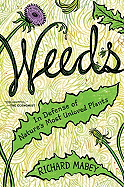
| Publisher: | Ecco | |
| Genre: | Gardening, General, Plants, Nature | |
| ISBN: | 9780062065452 | |
| Pub Date: | June 2011 | |
| Price: | $25.99 |
| Gardening |
by Richard Mabey
There's a distinct satisfaction in reading a book that is a pure extension of the writer's lifelong interest, the subject seemingly embracing all of the writer's career endeavors and personal interests in one densely populated and deeply felt book. Think of it as a really perfect lemon pound cake--all the best ingredients coming together in just the right proportions, in the hands of someone skilled. Richard Mabey's book is an outstanding lemon pound cake.
Early on in Weeds, Mabey relates the seeds (sorry) of his interest in the maligned plants and his mystification at the categorization of plants beautiful and tenacious (and, at times, relentlessly destructive) as pests to be eradicated. He brings a wealth of knowledge to a narrative that wanders like a walk in a spring meadow, taking in whatever the meadow has to offer. In this case, we learn of how invasive plants have spread from country to country, how they've changed from being valued medicinal and edible rarities to obnoxious, farmer-detested scourges and the motivations and politics behind how we view one plant as a salad and another as a pest. At just over 300 pages, this isn't the most comprehensive survey of weeds, but it's likely the most engrossing. --Matthew Tiffany, writer for Condalmo
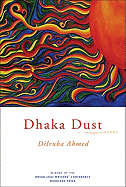
| Publisher: | Graywolf Press | |
| Genre: | General, Poetry | |
| ISBN: | 9781555975890 | |
| Pub Date: | June 2011 | |
| Price: | $15 |
| Poetry |
by Dilruba Ahmed
Though I have become more enamored of poetry as of late, it is rare that I read a book of poetry cover to cover, preferring instead to sample bits and pieces of verse as time and attention allow. Dhaka Dust is an exception to that. Dilruba Ahmed is an American-born Bangladeshi woman; Dhaka Dust, winner of the 2010 Bakeless Prize for Poetry, is her first full-length book of lyrical and narrative poems--and it is completely engaging and worthy of full focus.
The poems are remarkably clear in purpose, yet both rich and textured in content and voice. Ahmed's work interweaves a grounded Stateside presence with the ghosts of her cultural homeland, all under the influence of a personal, yet holistic, sense of place and language. The image of dust recurs throughout the book, but is not a limiting theme; in her poems, it can remind us of the absolute dirtiness of life, the taste of a finely powdered spice or the particular haziness of memory. The subject matter is varied, keenly observed and originally handled. Ahmed's poems that include family recollections are particularly striking:
my heels caked with dirt, collecting
a wildness. But my cousins' laughter
is milky, sweet, and rich, a gift
I can't refuse--like their cha--nor drink
completely.
Dhaka Dust will garner much praise and attention, especially since it is the first book of a poet you'll want to watch. --Roni K. Devlin, owner of Literary Life Bookstore & More
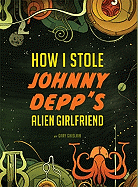
| Publisher: | Chronicle Books | |
| Genre: | Fantasy & Magic, Juvenile Fiction | |
| ISBN: | 9780811874601 | |
| Pub Date: | June 2011 | |
| Price: | $16.99 |
| Children's & Young Adult |
by Gary Ghislain
The taunting title gets at both the book's improbability and insanity. In this comical debut novel, narrator 14-year-old David Gershwin is spending the summer with his "famous therapist" father (his parents are divorced) in a village 100 miles from Paris. He becomes intrigued with a patient named Zelda, who was caught stealing food. It took four policemen to immobilize her. Zelda insists she's from Vahalal and has come to Earth to find her "chosen one" and bring him back to her planet. After Zelda knocks out David's father and escapes, Dr. Gershwin sends David back to his mother's in Paris. But Zelda stows away in the trunk of the car.
Gary Ghislain makes the premise plausible enough to believe that Zelda truly is from another planet. Others besides David witness examples of her superhuman strength and her talent for Space Splashing ("the ability to be at two points in space at the same time"). Zelda shows David on the Internet that her chosen one is none other than Johnny Depp. But the only way she can find out for sure is to "sample" his DNA. She demonstrates on David--a French kiss. He's a goner. Once a bond forms between David and Zelda, the narrator's stakes are high. So we believe (at the very least) that he believes these things are happening to him. This book should be in the hands of every teen male reader, regardless of whether or not he likes to read. And female readers will find a superhero champion in Zelda. --Jennifer M. Brown, children's editor
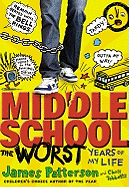
| Publisher: | Little, Brown | |
| Genre: | Boys & Men, General, Adolescence, Social Issues, Juvenile Fiction, Humorous Stories, Comics & Graphic Novels | |
| ISBN: | 9780316101875 | |
| Pub Date: | June 2011 | |
| Price: | $15.99 |
| Children's & Young Adult |
by James Patterson, Chris Tebbetts, illust. by Laura Park
"Rules Aren't For Everyone" (aka R.A.F.E.), and they certainly aren't for Rafe Khatchadorian, the star of James Patterson's newest novel. Rafe's unusual name inspires the motto of his plan for mayhem, in which he is awarded points for breaking every rule in his middle school's Code of Conduct--and there are lots of rules to break. Spurred on by his pal Leo, who provides the Captain Underpants-style doodle illustrations throughout the book, Rafe channels his unhappiness at starting middle school and his less than ideal home situation into disruptive pranks and an active fantasy life. His lack of study time spirals him into academic decline. Ultimately, a caring teacher helps guide his behavior in a more acceptable direction, and we discover Leo's mysterious background.
James Patterson (the Maximum Ride and Daniel X series), who has expressed the need for enjoyable children's literature, does his part to attempt to fill that void. However, this title does not totally live up to Patterson's other young adult books. There are similarities to his other works in the staccato-length chapters that propel the book's plot forward. Yet Rafe's middle school status muddies the target age, since the book's jacket art and plot arc skew slightly younger by today's standards. It would best suit middle-school-age children who are reluctant readers daunted by the genre's current two-inch-thick books. --Jessica Bushore, public librarian